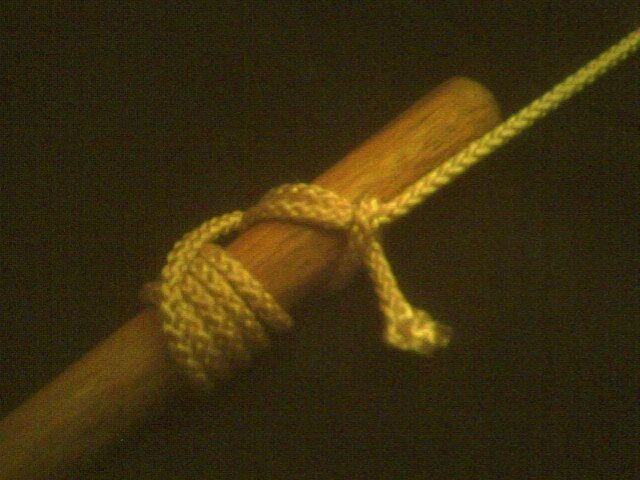Category Hitch Releasing Unload the working end | Origin John Smith, 1990 | |
 | ||
Related Typical use Tying to a post when weight is applied parallel to the postTying to a rope when load is applied parallel to that rope Caveat The Kleimheist knot will look almost identical, but the load with the klemheist should be applied with the bight lying across the turns on the post/rope the knot is tied to | ||
An icicle hitch is a knot that is excellent for connecting to a post when weight is applied to an end running parallel to the post in a specific direction. This type of hitch will hold its place even when holding a substantial load on a smooth surface. One can even suspend from a tapered post (such as a marlinspike) with this knot (hence the name "icicle hitch").
To tie an icicle hitch, bring the working end over the post, front to back, four or five times, working away from the end of the post (and the direction of expected pull). Bring the working end, back to front, alongside the standing end, leaving a substantial bight hanging behind the post. Bring this bight over both ends and over the end of the post. Tighten by pulling both ends perpendicular to the post. The pull on the standing end (running the direction of the post) will tighten the knot as more pull is given.
This knot is similar to the Prusik knot and the Klemheist knot. This class of knots is a "slip-and-grip" friction type that will pull tight when the load is applied in the correct direction and slide easily for placement with no load. The Prusik knot can withstand load in both directions, making it ideal for climbing situations. Upon examination of the icicle hitch, one finds that it operates under the same principle as the Klemheist knot and is in fact the same knot tied only with a bight in the end instead of the more common short loop used for climbing.
This knot was first demonstrated at the eighth Annual General Meeting of the International Guild of Knot Tyers in 1990.
